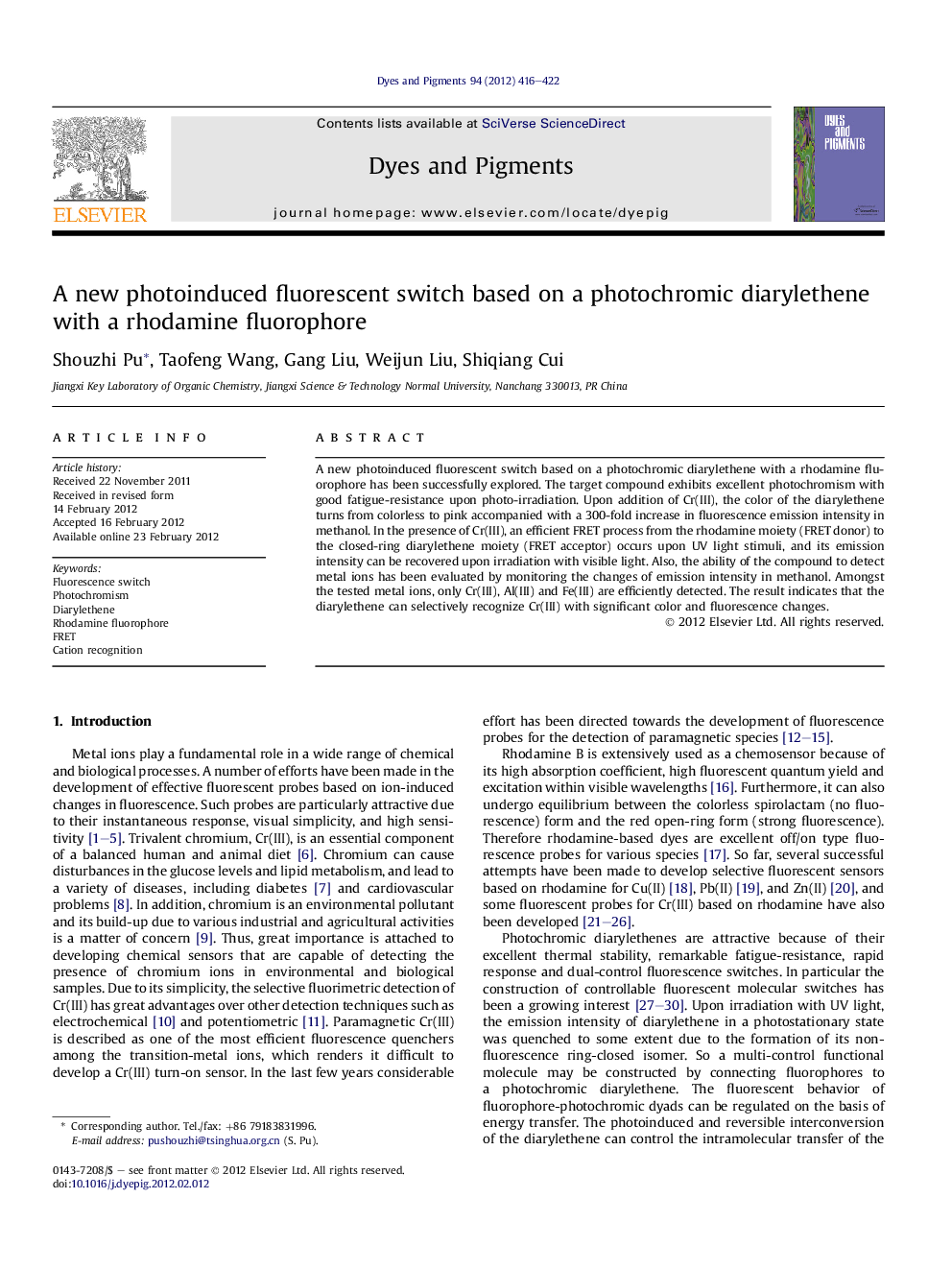| Article ID | Journal | Published Year | Pages | File Type |
|---|---|---|---|---|
| 176632 | Dyes and Pigments | 2012 | 7 Pages |
A new photoinduced fluorescent switch based on a photochromic diarylethene with a rhodamine fluorophore has been successfully explored. The target compound exhibits excellent photochromism with good fatigue-resistance upon photo-irradiation. Upon addition of Cr(III), the color of the diarylethene turns from colorless to pink accompanied with a 300-fold increase in fluorescence emission intensity in methanol. In the presence of Cr(III), an efficient FRET process from the rhodamine moiety (FRET donor) to the closed-ring diarylethene moiety (FRET acceptor) occurs upon UV light stimuli, and its emission intensity can be recovered upon irradiation with visible light. Also, the ability of the compound to detect metal ions has been evaluated by monitoring the changes of emission intensity in methanol. Amongst the tested metal ions, only Cr(III), Al(III) and Fe(III) are efficiently detected. The result indicates that the diarylethene can selectively recognize Cr(III) with significant color and fluorescence changes.
Graphical abstractA novel controllable fluorescent molecular switch based on a diarylethene and a rhodamine fluorophore was synthesized. Cr(III) can be selectively recognized by changes in fluorescence and color.Figure optionsDownload full-size imageDownload as PowerPoint slideHighlights► A new diarylethene bearing a rhodamine unit was synthesized. ► Upon addition of Cr(III), FRET occurs upon UV light stimuli. ► Cr(III) can be selectively recognized by changes in fluorescence.
